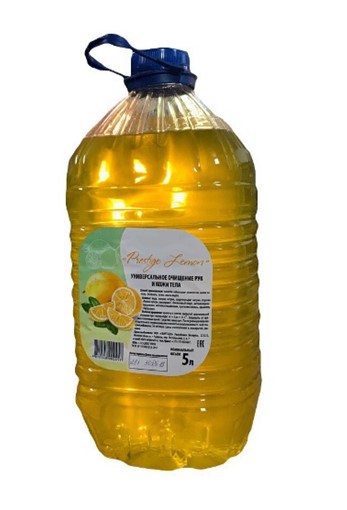How much do Americans love meat? Rising prices will soon show

Despite higher prices linked to increased production costs and supply chain restrictions, U.S. consumer demand for MEAT remains exceptionally strong, according to a new report from CoBank's Knowledge Exchange. Unfortunately, consumer demand for meat will be tested once again as the full effects of producer price inflation hit retail meat sales.
“Retail meat prices will remain high throughout 2022,” said Brian Ernest, lead animal protein economist at CoBank, in a press release. meat prices, but that will change soon.”
With the combined cost of beef, pork and chicken up 22% year-over-year in the first quarter of 2022, consumers will almost certainly see higher meat prices, CoBank said.
“Beef consumption has not yet declined due to price increases. But as general inflation reduces consumer purchasing power, we may finally see a significant change in their willingness to pay for red meat,” Ernest said in a press release.
If that turns out to be the case, he believes the US broiler industry could be well positioned again for moderate growth and high margins.
There is no doubt that the main drivers of higher and more volatile meat prices are changing consumer buying patterns and market uncertainty caused by the pandemic. But Ernest says supply issues also played a role. The temporary closure of beef and pork factories in 2020 led to stockpiles of fattened livestock that are still in place in some places.
CoBank reports that the country's beef cattle population continues to decline, in part due to the ongoing drought in the US west and modest prices for fattening calves. In addition, the combined number of cows and replacement heifers has decreased by 12% since 2017. Similarly, the country's sow herd is declining and has declined by almost 6% over the past three years, mainly due to losses incurred in 2018-2019. The USDA forecasts a 2% decline in U.S. beef and pork production in 2022.
“Price volatility in the animal protein sector has become a daily headache for purchasing departments. While prices began in 2022 in a post-holiday slump, wholesale prices were still higher than pre-pandemic levels. Volatility in wholesale markets remains an obstacle to planning promotions,” CoBank said in a statement.
Increased spot market volatility and supply volatility have handcuffed retail protein marketing during the 2020 grilling season.
“Activity rebounded substantially in 2021 as grocers sought to maintain sales generated during the pandemic. In 2022, the solution to higher meat prices could be to offer more products like ground beef, hot dogs and charcuterie,” Ernest said in the report.
it is likely that meat retailers will shift their focus this year to increasing profits over sales volumes as the grill season kicks into gear. This means consumers will see a more creative approach to meat products, according to CoBank.
Read together with it:
- Цены на говядину в Ростовской области резко увеличилисьЦены на яйца, в свою очередь, колеблются в зависимости от затрат на корма, ветеринарные препараты, энергоресурсы и упаковку, однако в этом году они снизились на 18,35%. На фоне этого также наблюдается падение цен на некоторые фрукты и овощи, входящие в «борщевой набор»: капуста подешевела на 26,48%, картофель на 14,......
- A Rostov broiler farmer was fined 750,000 rubles for selling meat contaminated with salmonella.The lawsuit against the poultry farm was filed by ROSSELKHOZNADZOR based on the results of an inspection that revealed serious violations of the production process. These included rust on metal structures, which compromised product quality, and unsanitary conditions that facilitated the growth of pathogenic microflora. A batch of Blagoyar pork legs with the backbone proved particularly dangerous, ...
- Yamal is showing moderate inflation amid falling prices for vegetables and eggs.Food market: mixed dynamics Over the first eight months of 2025, food prices in the Yamalo-Nenets Autonomous Okrug rose by 1.8% compared to the national average of 3.0%. The largestPrice increases were recorded in the following categories: fish and seafood (+7.2%) bakery products (+5.5%) MEAT and poultry (+5.3%) confectionery (+5.2%) At the same time, prices have dropped significantly for: chicken...
- Reducing VAT on socially significant goods: a step toward improving the economic situation in RussiaThe VAT reduction will have a positive impact on citizens' living standards, as basic goods will become more affordable. The reduced rate will apply to products such as MEAT , MILK , eggs , fruits and vegetables , as well as animal feed. This measure will help support both consumers and producers, strengthening the agricultural sector. One of the features of the proposed bill is the ability to fle...
- Lamb prices are rising sharply in Novosibirsk.According to Rosstat, a kilogram of MEAT cost 759.82 rubles in July 2025, compared to 678.10 rubles a year ago. Meanwhile, the nationwide price increase for this product was 37.8%, raising the price from 590 rubles to 814 rubles per kilogram. Meanwhile, annual inflation for lamb in the country was only 3.8%. Local doctors previously discussed the HEALTH effects of red meat .......
- Chicken prices in southern Russia are expected to rise by the end of 2025.According to experts, there are currently no indications of price increases in the coming months. However, various factors, such as inflation , rising feed costs, and rising utility rates, could lead to price increases in the future. There are concerns that demand for chicken MEAT could also change due to other unpredictable factors, such as poultry disease outbreaks and currency fluctuations. The...
- Pork Prices in the Novosibirsk Region: Analysis and ForecastsFrom July 2023 to July 2025, the price of boneless pork in RUSSIA increased by 21.06%, reaching 492.67 rubles per kilogram. In the Novosibirsk Region, this figure was only 16.81%, corresponding to an average price of 474.73 rubles per kilogram in July 2025, compared to 406.41 rubles in July 2023. The stability of prices in the Novosibirsk region is explained by high levels of local production and ...
- US: Beef demand remains strong, so do pricesПоследние данные Министерства сельского хозяйства США показали, что индекс розничного спроса на свежую говядину во втором квартале оказался на самом высоком уровне по крайней мере за 25 лет. По данным CoBank, к факторам, формирующим покупательское поведение потребителей, относятся растущий интерес к диетическому белку, изменение представлений о здоровье, связанном с говядиной, и доступность говяди...
- Pork prices in the Novosibirsk region: analysis and trendsPork Price Rise: Novosibirsk vs. RUSSIA According to information published by NGS, over the two years from July 2023 to July 2025, the price of boneless pork in Russia increased by 21.06%, reaching 492.67 rubles per kilogram. Meanwhile, in the Novosibirsk Region, this figure was significantly lower – only 16.81%, which corresponds to an average price of 474.73 rubles per kilogram in July 2......
- Ministry of Economic Development on the current price situation on the Russian and world markets. August 20, 20251. Deflation continued during the week of August 12-18, 2025 (-0.04% n/a). 2. In the food segment, prices continued to decline (-0.20% n/a), including prices for fruit and vegetable products that fell by -3.7% n/a. Potatoes (-8.9% n/a), carrots (-6.2% n/a), onions (-6.7% n/a), cabbage (-6.3% n/a), and tomatoes (-7.4% n/a) continued to fall in price. For food products, with the exception of fruit a...






























































